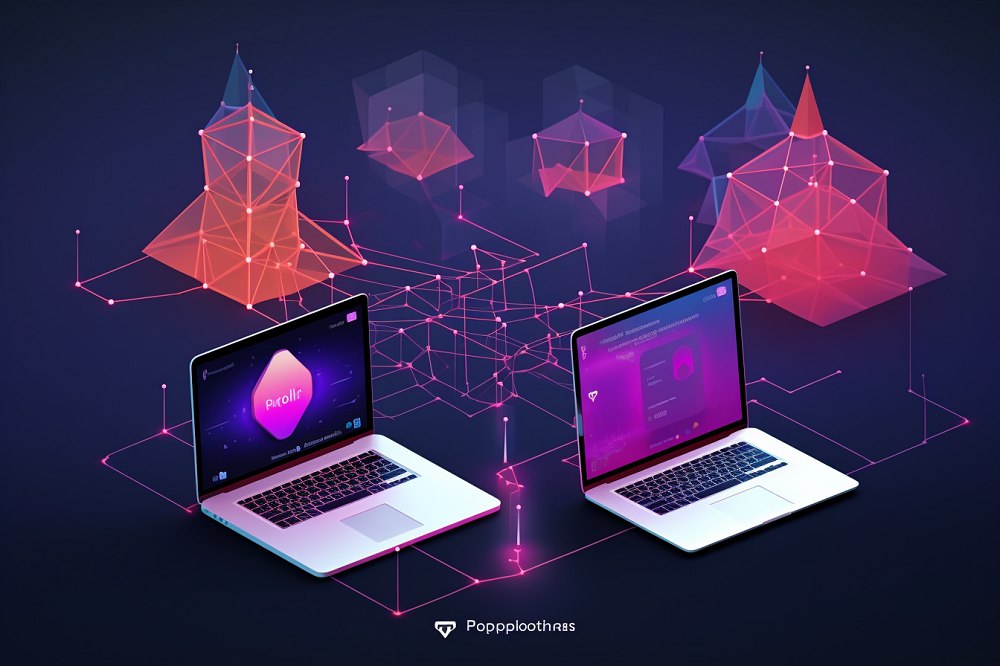Consider blockchains as virtual islands that cannot easily communicate with one another. Thus, it is difficult for people to transfer their digital assets between multiple blockchains.
However, blockchain bridges enable several blockchains to collaborate and allow assets to flow seamlessly from one blockchain to another. Beyond moving funds, these bridges let decentralized programs from many blockchains share resources, perform tasks simultaneously, or collaborate in many other ways.
How Solana Bridge Works
A bridge allows users to move digital assets between multiple blockchains seamlessly. For example, the bridge makes transferring Binance USD (BUSD) to Solana or other networks easier.
The means for accomplishing such transfers differ depending on the bridge. However, a lock-and-mint system is typical. This system secures assets on the source chain, and a wrapped version of the asset with an equivalent value is created on the destination chain.
This action does not influence the original asset’s circulating supply; it makes a wrapped version of the destination chain, including its supply metrics. In the reverse action known as burning and minting, the system destroys the wrapped asset (burning) and releases the locked token (minting), allowing it to move to the native blockchain.
Several bridges to Solana are available, the most popular being Portal (previously Wormhole) and Allbridge.
Step-By-Step Process Of Bridging To Decentralized Platforms
Step 1: Select Blockchain
The bridge functionality requires the user to specify the source blockchain (from where the assets originate) and the target blockchain.
Step 2: Establish Wallet Connection
To proceed, users must connect their Web3 wallet to the bridge using the “Connect” button. A window will appear upon clicking, giving a list of compatible wallet providers from which the user can select and then link to the bridge.
Step 3: Select an Asset for Transfer
Once the wallet has successfully connected to the bridge, users must select an asset from the “Select a Token” drop-down box. They can choose an asset from the list of supported alternatives or use the search function to find the exact item they want to transfer.
Step 4: Connect Solana Wallet
When users click the “Connect” button, the interface displays a list of supported Solana wallets, enabling them to select one.
Step 5: Setup Associated Token Account
Once the source and target wallets are linked, users must create a token account in their Solana wallet. This can be accomplished by clicking the “Create associated token account” option, which facilitates the receipt of transferred tokens. Users with a connected token account can skip to the next step.
Step 6: Start Fund Bridging
Users must authorize the token transfer via the bridge interface and validate the transaction using their associated wallet to proceed. You can submit assets to the bridge using the “Transfer” menu.
Step 7: Claim Transferred Funds
After completing the fund bridging process, customers can use the “Redeem” button to claim the bridge tokens using their Solana wallet.
Bridging Terminologies And Fee Structures
Slippage is the difference between the anticipated and actual execution pricing in a transaction. Favorable scenarios include low slippage because, without flexibility, each price change could cause a transaction cancellation and loss of network revenue. Therefore, keeping some slippage is critical when dealing with a pool’s low liquidity.
Trading Route
In asset bridging, a trade route defines an asset’s path during a swap or bridge transaction, which can involve numerous steps or platforms. It is vital to note that a swap acts not as a bridge on centralized exchanges but as a decentralized finance (DeFi) aggregator.
However, not all centralized exchanges work similarly; some utilize algorithms to identify an appropriate bridge automatically, while others allow users to switch bridges manually.
Network Fee
The network’s fee includes the cost of using the blockchain network for bridging. There are four parts to this pricing structure: source network fees, bridge fees, target network fees, and conversion fees.
Source network fees are paid to the source network for asset transfers. In contrast, destination network fees are payable by the destination network (e.g., Solana) for processing transactions between the bridge and the wallet.
Transaction Time
Three factors (source network confirmation time, bridge processing time, and destination network confirmation) determine the duration of bridge transactions. When using Ethereum as the source network, the confirmation time depends on the quantity of gas used.e
Solana often ensures that payments get into the wallet within seconds. The efficiency of the chosen bridge also affects the total time required for the bridging process.
Risks Of Blockchain Bridging
Centralization, downtime, and smart contract problems are concerns of blockchain bridges. Certain bridges use centralized authorities to transfer digital assets, contradicting the blockchain ecosystem’s decentralization ethos.
Conclusion
Bridges can stall transactions. However, prominent bridges can manage such situations to ensure quick transaction completion. Insufficient gas can also delay a transaction. So, funds are typically refunded to the user’s wallet to avoid complications.
